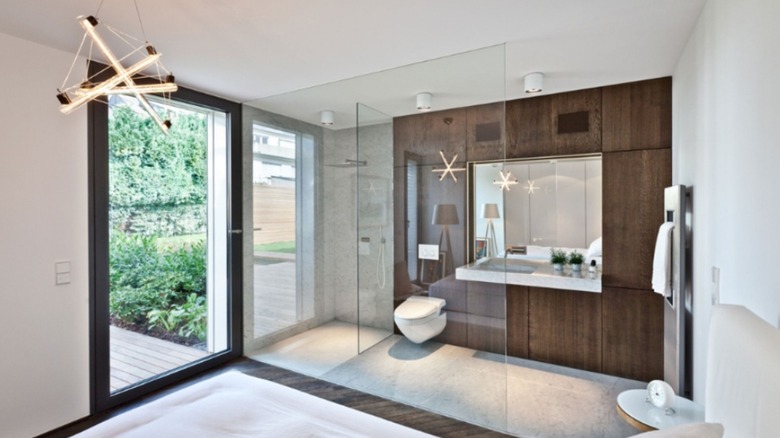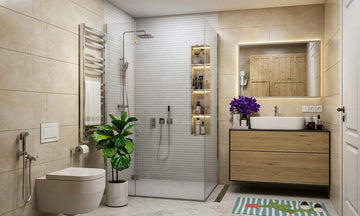The modern bathroom is undergoing a transformative evolution, introducing a hands-free bathroom experience that is changing the way we approach personal hygiene and routine tasks. For industry QA professionals, this innovation not only enhances user convenience but also elevates safety, hygiene, and water efficiency to unprecedented levels.
At the heart of this transformation is the integration of smart technology, which is paving the way for more intuitive and responsive bathroom environments. Imagine walking into a bathroom where lights adjust automatically, faucets activate with the wave of a hand, and toilets flush without physical contact. This isn't just futuristic fantasy; its the reality of todays advanced bathroom design.

The Rise of Smart Bathrooms
Smart bathrooms are increasingly becoming a staple in modern homes, driven by the desire for convenience and efficiency. According to [DripX Insights on Smart Bathroom Automation](https://dripx.io/blogs/our-insights/smart-bathroom-automation-tips), these innovations are not just about luxurytheyre about creating an environment that supports sustainable living. Features like motion-sensor faucets and automated lighting systems help conserve water and energy, aligning with the growing demand for eco-friendly living spaces.
Moreover, the integration of smart mirrors that display weather updates, news, and even health stats is transforming the bathroom into a multifunctional space. This is particularly beneficial in enhancing the user experience by saving time and increasing accessibility to vital information.
Benefits of a Hands-Free Approach
A key benefit of the hands-free bathroom experience is enhanced hygiene. With sensor-activated devices, the risk of germ transmission is significantly reduced. This feature is crucial in settings such as hospitals and public restrooms, where hygiene is paramount. Additionally, these technologies minimize the need for constant cleaning, as surfaces remain untouched by potentially dirty hands.
Another advantage is the improvement in water efficiency. Features such as touchless faucets and toilets are designed to optimize water usage, which not only reduces utility bills but also supports environmental conservation efforts. For more insights on improving water efficiency in the home, check out [Home Improvement for Water Efficiency](https://dripx.io/blogs/our-insights/home-improvement-for-water-efficiency).
Challenges and Considerations
While the benefits of a hands-free bathroom experience are clear, there are challenges to consider. The initial cost of installing such technology can be high, which may deter some homeowners or businesses from making the switch. However, the long-term savings on water and energy bills often offset these initial expenses.
There is also the consideration of technology maintenance. Ensuring that smart devices are updated and functioning correctly requires regular attention, which can be a drawback for users seeking a low-maintenance solution.
Future Trends in Bathroom Technology
Looking to the future, the bathroom of tomorrow will likely feature even more advanced technologies. Concepts like virtual reality showers that simulate different environments and AI-driven personal assistants that manage bathroom schedules are already in development. The potential for innovation in this space is vast, as outlined in [Innovations in Sustainable Plumbing](https://dripx.io/blogs/our-insights/innovations-in-sustainable-plumbing).
Moreover, the integration of smart water management systems is expected to become more prevalent. These systems monitor usage patterns and provide feedback, helping users optimize their consumption habits. Learn more about the future of smart water technology in [Bathrooms of the Future](https://www.uts.edu.au/case-studies/bathrooms-future-assessing-scope-smart-water-tech).
Conclusion
The transition to a hands-free bathroom experience marks a significant shift in how we view and use our bathrooms. For industry QA professionals, the challenge lies in ensuring these technologies meet rigorous standards of quality and reliability. As we continue to embrace these innovations, the focus will remain on balancing convenience with sustainability, ensuring that the bathrooms of tomorrow are as efficient as they are enjoyable.

FAQ
What are the primary benefits of a hands-free bathroom experience?
The primary benefits include improved hygiene by reducing contact with surfaces, increased water and energy efficiency, and enhanced user convenience.
Are hands-free bathrooms suitable for commercial settings?
Yes, hands-free bathrooms are ideal for commercial settings such as offices and public restrooms where hygiene and efficiency are priorities.
How can I integrate hands-free technology into my existing bathroom?
Integration can start with simple upgrades such as installing motion-sensor faucets or automated lighting systems. For more extensive renovations, consulting with a professional on smart bathroom solutions is recommended. Check out [Smart Bathroom Technology Trends](https://blog.callcustombuilt.com/smart-bathroom-technology-trends-review) for inspiration and guidance.






